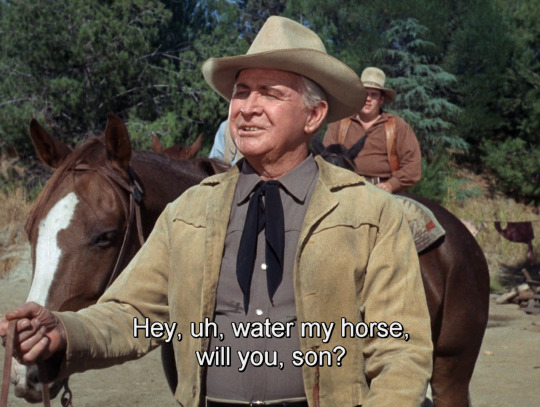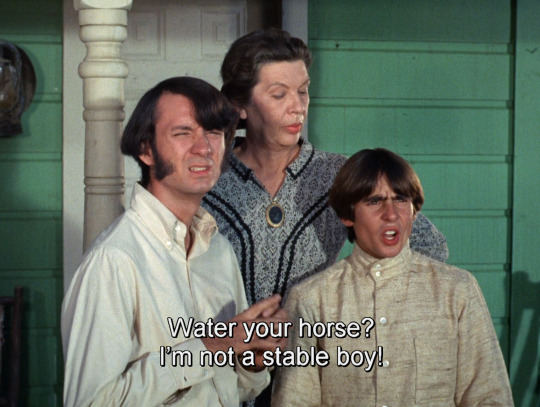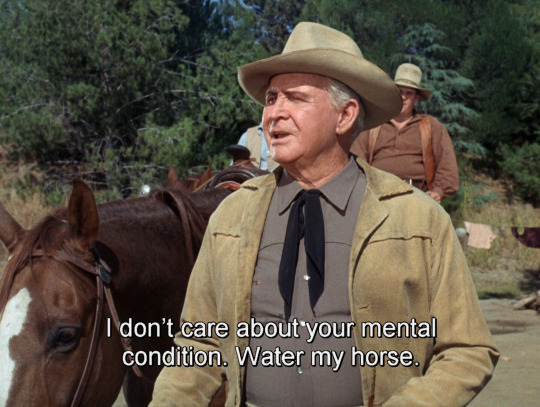Genderfluid, Chronically ill, Creative | 30 | Trans | ADHD | Autistic | --- Posting: art, mental health, pro-lgbtqia+, pro-BLM, anti-capitalism ect
Last active 3 hours ago
Don't wanna be here? Send us removal request.
Text
Natalie Portman being confused by the fact that you have to say “hi” to someone before starting a conversation in France got me like ?????
116K notes
·
View notes
Text
bad news, euclid fans! i just disproved his assertation that parallel lines don't intersect for their entire infinite length. i walked along them for approximately 8.6 x 10⁸ km and you know what i found? that's right, a tangle.

they don't touch for the rest of their infinite length though, i did check. in both directions.
31K notes
·
View notes
Text
why be radically exclusionary abt queerness when you could be radically inclusionary instead. let's inflate the numbers. let's become the majority. the sky's the limit
42K notes
·
View notes
Text
I bet one of the fun parts of filming action movies is getting picked to be one of the guys who aims laser pointers at a character’s chest to imply they’re being targeted by snipers
5K notes
·
View notes
Text
i mean if we’re being absolutely, 100% objective about it all, THE best greentext story is “you know how it is with spaghetti”
105K notes
·
View notes
Text
Hey you can’t really like. Do anything about somebody perceiving your behavior as rude. Like they’re not telling you you’re doing something illegal they’re just saying hey you’re kinda being a shithead. It’s not discrimination or oppression for somebody to tell you you’re acting like a shithead rn.
2K notes
·
View notes
Text
not to be an asshole but i think a lot of disability discourse on this website cannot comprehend the idea of being physically disabled in a way which is like. not at all negotiable or flexible. like i think it's great that we're pushing people to understand that disability is nuanced and that there are disabilities which are not visible forms of physical disability but also like. sometimes you straight up cannot climb stairs. no not even on a good day not even when you "have enough spoons" it is just not physically possible. or you cannot get on and off a bus without struggling or without help. or it is physically not possible for you to bathe yourself. and it's not about "and you force yourself to push through it because of the internalized ableism" because you literally cannot physically fucking do it. like i am not trying to be mean but i feel like it frequently strikes me that people talking about disability seemingly do not understand the concept of I Literally Cannot Do This No Matter How Much I Want To Or Try Like It Is Physically Not Possible
15K notes
·
View notes
Text
When Stockholm’s Traffic Office conducted a general assessment of street traffic in the Swedish capital in 2001, it came to the shocking conclusion that two-thirds of all trees in the city center were dead or dying.
City authorities agreed that an urgent response was needed to nurse these leafy urban ecosystem pillars back to health.
Enter Björn Embrén, Stockholm’s first “tree officer.”
Under his leadership, various technologies and materials were tested in an attempt to create a more suitable living space for trees in the urban environment.
“I knew that they could grow if the circumstances were right,” says Embrén, a former professional gardener.
“It’s like putting a plastic bag over your head and tightening it over your neck,” says Embrén. “That’s what happened to the trees in Stockholm. They were dying.”
Eventually, inspired by railroad embankments — which require only a small amount of organic matter for healthy trees to grow — Embrén concocted what was to become known as the “Stockholm tree pit” model.
By 2002, Embrén had drawn up designs. And by 2003, they were already building.
The design involves digging a pit and constructing a frame underground around the tree’s roots, and then filling said pit with a mixture of soil and stone, sometimes including biochar, to both aerate and fertilize the soil. These permeable layers are very strong and physically adaptable but also allow stormwater to flow in, meaning the trees are provided with sufficient air and water naturally. They also allow rainwater to be soaked up — a necessity amid more extreme weather brought on by climate change.
“We found that the more breathable the materials we used, the happier the trees were,” adds Embrén.
Proponents say the method has a number of benefits, including the fact that pits can be installed around existing trees, they can bear the weight of heavy-vehicle traffic, they require little topsoil — a resource that is becoming scarce — and they need less watering than traditionally-planted trees.
This approach, which allows tree roots to thrive beneath hard surfacing, ergo allowing healthy trees to grow within the modern built environment, is particularly relevant as cities attempt to re-green and reforest in the face of climate change.
According to the United Nations Economic Commission for Europe, urban forests can help “future-proof” cities, which are responsible for about 75 percent of global CO2 emissions. Sustainable urban forestry, it says, can bring multiple benefits, such as lowering temperatures, improving public health, creating habitats for biodiversity, sequestering carbon, generating green jobs, and mitigating risks of floods and landslides.
“It’s more important now than ever before,” says Ryan Klein, an assistant professor in the Department of Environmental Horticulture at the University of Florida. “We have these massive populations in urban areas. And we’re seeing more extreme weather like hurricanes, wildfires and prolonged droughts. Trees can help to offset some of these negative effects.”
However, amid the rush to rapidly reforest cities, experts like Klein warn that due to ineffective methods and techniques being used, it’s common to see urban trees in poor health, and trees planted in cities often have very high mortality rates.
“We have the understanding of how to grow healthier, more sustainable and resilient forests,” says Klein. “The research backs it. Unfortunately, we don’t always invest the time, money or internal know-how on implementing this.”
A review of 16 scientific studies on urban tree mortality, published in 2019, found that in the first five years after planting, 6.6 to 7 percent of trees died annually.
“Urban soils are not very tree-friendly currently,” says Rik De Vreese, leader of the Urban Forestry Team at the European Forestry Institute. “It’s quite a serious threat.”
When trees aren’t properly anchored, De Vreese adds, it can also lead to other issues, such as trunks falling over and causing damage or roots warping sidewalks.
However, the Stockholm Tree Pit method — and the way that it’s been implemented in Sweden — is helping urban forests genuinely take root.
One of the first locations where Embrén introduced a tree pit was Erik Dahlbergsallén street in Stockholm, not far from the popular Swedish Museum of Natural History.
There, according to research by the municipality, the circumference of a selection of those planted trees increased from 30 to 35 centimeters to 70 to 83 centimeters between 2004 and 2013, even surpassing that of trees without the tree pits that have been there for more than 80 years. The latest figures from 2024 saw them reach between 100 and 136 centimeters.
“It’s easy to see how effective the pits have been,” says Embrén.
The municipality estimates that 2.3 million liters of rainwater are managed by the trees per year, and consequently, 4,600 square meters of roofs and sidewalks have been disconnected from the sewage system, reducing the burden on water treatment services.
This technique has proven so successful that it has become the standard for all other development projects in the public spaces of Stockholm. Embrén says he has been directly involved in constructing more than 3,000 tree pits, and while he has since retired, there are now three “tree officers” who have taken on the expanding role.
Britt-Marie Alvem, one of the current tree officers, estimates that the city now builds between 500 and 1,000 tree pits a year.
These days, the tree pits are also in almost every Swedish city — with a few variations.
“Some have copied and changed a little bit, like adding pumice to the stone mix,” says Embrén.
Stockholm’s tree pits are now spreading across Europe, too. In Budapest, Hungary’s capital, the tree pits can be found all over Bartók Béla Boulevard and Arany János Street. Embrén says the Spanish city of Madrid has implemented the method using local materials. And it’s become increasingly popular in the U.K.
Ben Rose, the principal arboricultural consultant at U.K. tree service Bosky Trees and the founder of Stockholm Tree Pits, a U.K.-based company that produces the equipment required to make tree pits, says that he has planted about 500 trees using the Stockholm model in the U.K. since he began in 2019, mostly as part of small-scale pilot projects.
“The approach is very suitable for use in urban situations, particularly in car parks, in plazas, and beside walkways or cycle paths,” says Rose.
Join the Reasons to be Cheerful community by supporting our nonprofit publication and giving what you can. JoinCancel anytime
Yet there are some drawbacks to the system. Installation costs can be high, the pits can require a large amount of space to install, and it is impossible to reuse existing soil. In addition, for now there is a relative dearth of professionals who know how to construct tree pits.
“Our main concern is the price,” says De Vreese, whose team is currently studying the importance of “structural soils” like those deployed by the tree pits. “Excavating the soil surrounding the tree and refilling it is no small job.”
And while Professor Klein praises the Stockholm Tree Pit’s use of structural soil and how effective it’s proven to be, he notes that the long-term success of urban forestry also relies on other factors such as the supply of high quality nursery stock and proactive tree management such as routine pruning by municipalities.
“If we don’t have these we are setting ourselves up for failure,” he says. “Some cities do the bare minimum. In the U.S.A., it’s the wild west. But others, like Stockholm, are proactive, and they have public officials seriously behind it. That’s what we need.”
By: Peter Yeung, March 4, 2025
448 notes
·
View notes
Text

Domestic incompetence is going to kill men
102K notes
·
View notes
Text
It's worth noting that there are some extraordinary people in the world who have been quietly doing the work for decades, and they should be celebrated with all the fervor that we denounce the villains. I first read about Harrison twenty-odd years ago, when he'd already been doing this for about fifty years, and this is one of those guys whose life can, indeed, be summed up by his headline.
James Harrison saved millions of lives. Millions. Not with anything flashy or dramatic, not with profound speeches or brilliant strategy or any of the things we insist are the ways to impact the world. He simply kept himself as healthy as possible so that every few weeks he could go and sit quietly in a room and give away a fundamental part of himself — quite literally his lifeblood — to people he'd never meet, for no pay and no expectation of acknowledgement. (He was, it should be said, acknowledged quite a lot per this article, but that's beside the point.)
When we talk about the kind of people we want to elevate and celebrate in our societies, I often think of people like James Harrison. I hope we get more of him; not just for his blood, but for his heart.
16K notes
·
View notes
Text
PLEASE let me put your camera in my mouth i promise i wont bite you and chomp you and shake you and drag you to a freezing watery grave pleas please please i am just a friendly sea doggy i will only engulf your camera in my jaws and not anything else (lying)

21K notes
·
View notes
Text
you know what's weird? there's no public restrooms in residential neighborhoods. like if you live in a residential area, which is where a lot of people live, there's exactly one place you can shit and it's only and exclusively your own personal toilet inside your house. maybe, MAYBE, there's a park with bathrooms that haven't been locked against the homeless, and maybe there's a commercial space like a coffee shop or gas station you can buy the right to shit. but if you're a toddler, or pregnant, or elderly, or have IBS, or get food poisoning, or just want to walk around for a couple hours, you HAVE to time yourself based on distance to your own personal toilet. because residential neighborhoods as a matter of course do not have public toilets anywhere, for anyone. despite how many kids, elderly people, disabled people, and pregnant people live there. this seems even crazier for women, who generally require a toilet for pissing, too.
that's weird, right?
3K notes
·
View notes






